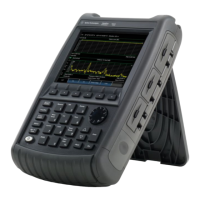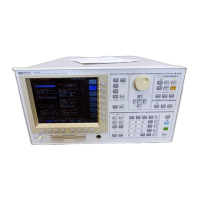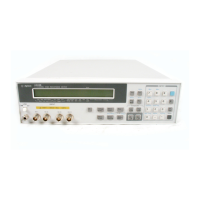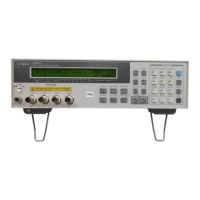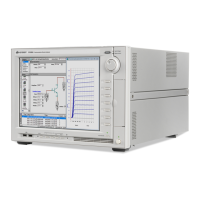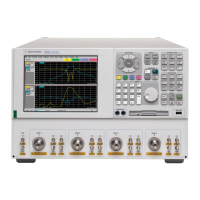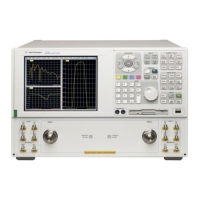72 FieldFox User’s Guide
When a calibration that you performed is being interpolated, an asterisk is added
to the Cal annotation. For example: Cal ON U* is shown on the screen when the
current Response or Mechanical cal is being interpolated. An * is never added to
a CalRdy.
Cal ON ? – Questionable Accuracy
When the Output Power, Interference Rejection, or IF BW (NA Mode ONLY)
setting is changed AFTER performing a calibration, a question mark is added to
the Cal annotation. For example: Cal ON Q?. is shown on the screen when the
current QuickCal is being interpolated. An ? is never added to CalRdy.
The resulting measurement accuracy depends on how much the setting has
changed. For highest accuracy, recalibrate using the new settings.
Compatible Mode Calibrations
The FieldFox can have only ONE calibration present for all modes (except
CalReady). Calibrating in one mode will overwrite calibrations for other modes.
Because NA, CAT, and VVM modes are very similar, a calibration that is
performed in one mode can also be applied in the other modes.
To apply a Cal that was performed in a different mode, press Cal 5 then select
Cal ON.
Save the Calibration
After performing any type of calibration, you can save the FieldFox settings
along with the calibration into a STATE (*.sta) file. These settings and calibration
can then be recalled as necessary. To learn how, see Saving and Recalling Files
on page 164.
CalReady Properties
There are several factory CalReady calibrations on every FieldFox. These can be
selected based on the type of DUT that you measure most often, and the
compromise that you prefer to make between measurement speed versus
measurement accuracy. Remember, CalReady was performed at the test ports.
Therefore, a CalReady calibration is most accurate when the DUT is connected to
the test ports. Learn more about CalReady on page 63.
This setting does NOT survive Preset or Power ON/OFF.
Press Cal 5 then More
Then CalRdy
Then choose from:
o 2-Port Cal (default) Corrects all four S-parameters. Requires a forward and
reverse sweep, which causes slower trace measurements. Learn why on page
69.
o Enh Response Corrects forward (S21 and S11) and reverse (S12 and S22)
measurements separately. Therefore, when measurements in only one
direction are required, this choice provides faster trace measurements than
a full 2-port cal. Also choose an Enhanced Response Optimization. Learn
more on page 71.

